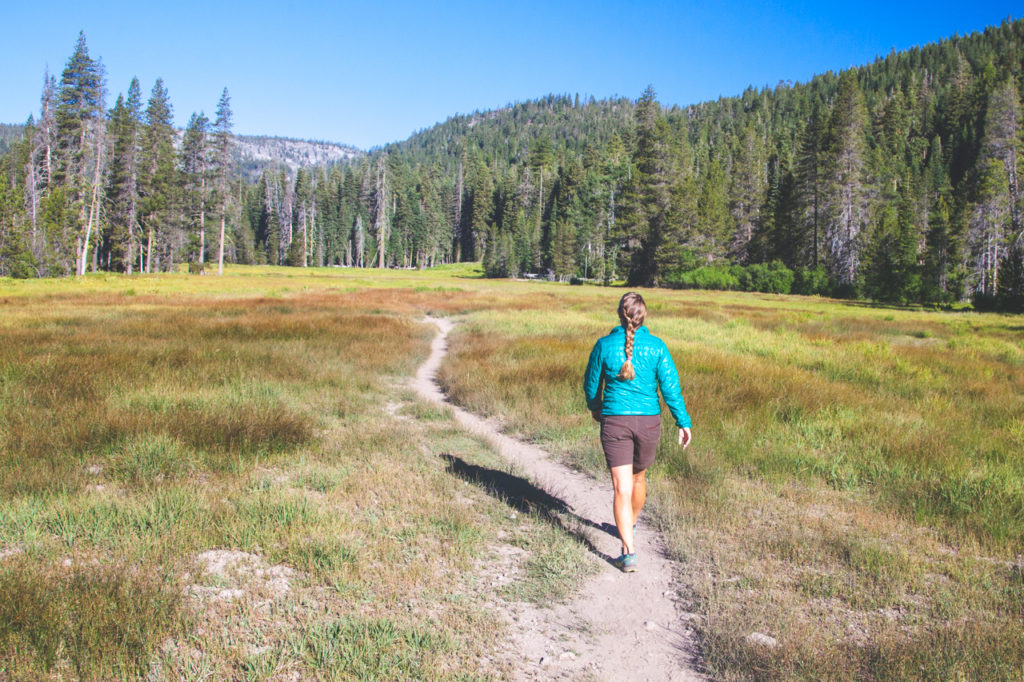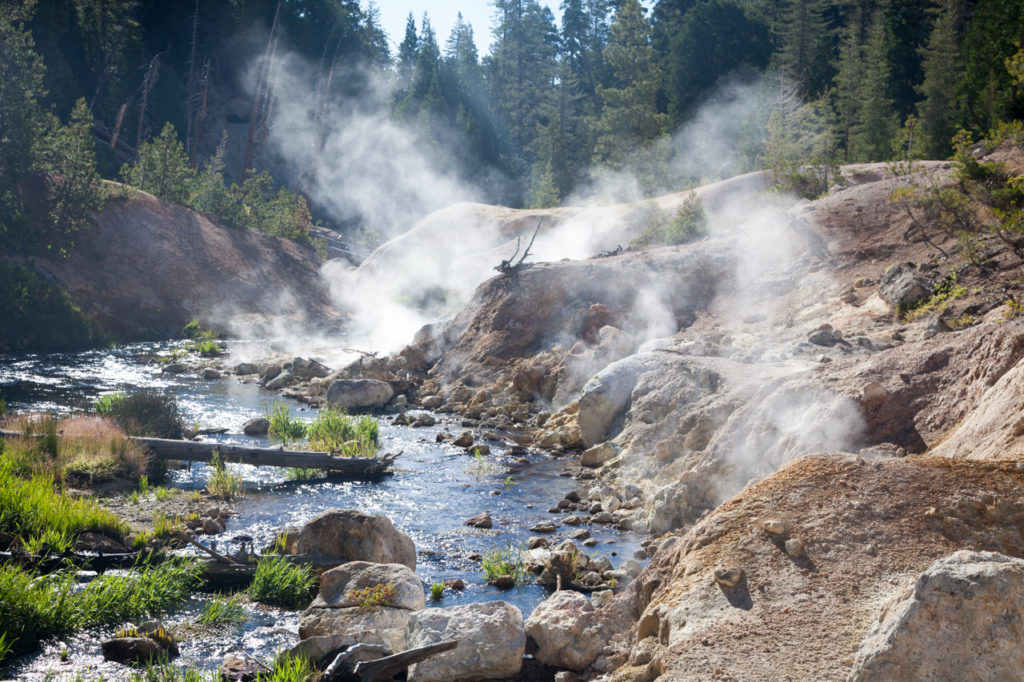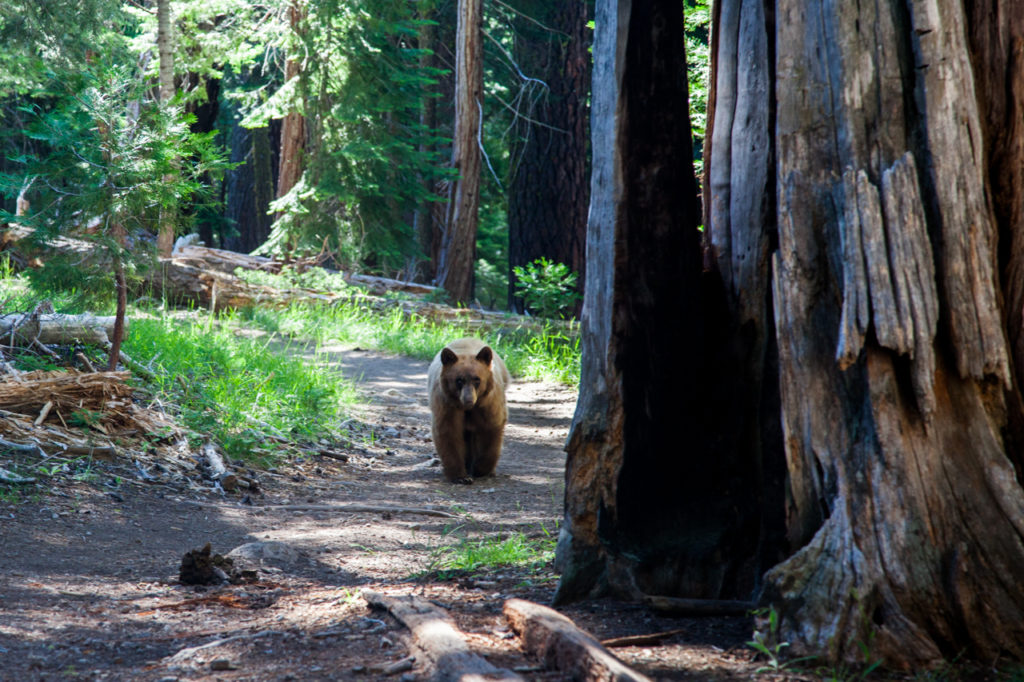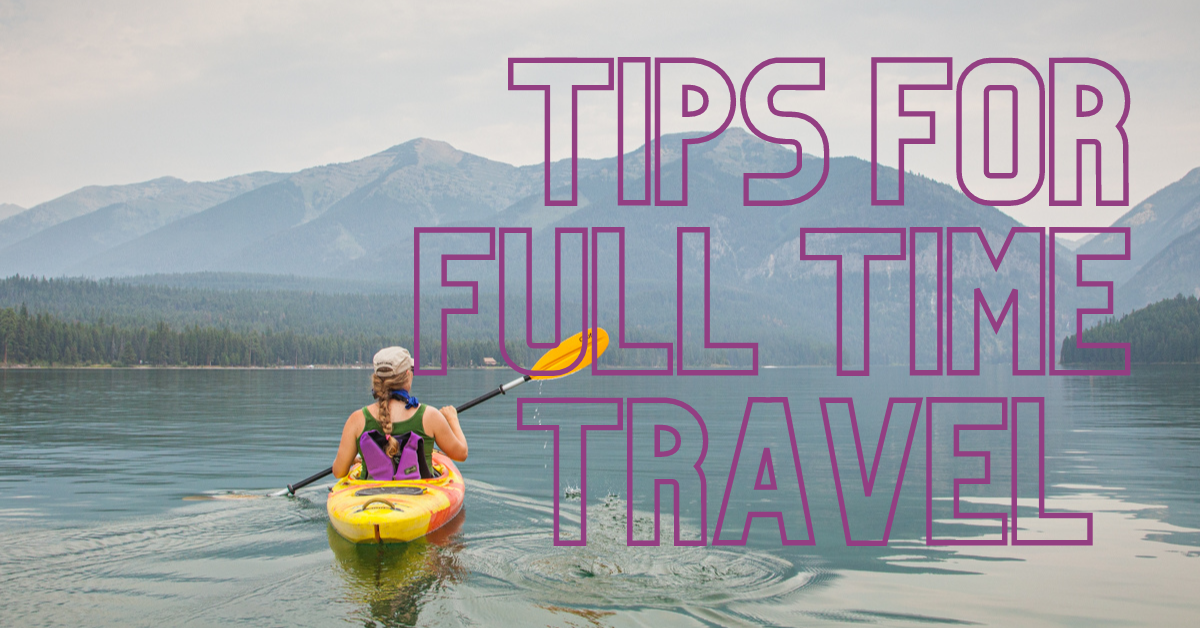When Nothing Works in a Bear Encounter
Our legs were tired, our feet blistered and our skin sunburned after hiking 170-miles around Lake Tahoe on the Tahoe Rim Trail. My wife Rachael and I had decided to take it easy and enjoy some small day hikes in the less-traveled region of Lassen National Park, the Warner Valley Trailhead.
We started out on the trail early and reached a geothermal feature called Devil’s Kitchen before most people had woken up in their tents. We enjoyed a quick stroll through the creekside pockets of 100◦F+ water that reeked of sulfur.
We followed the ultra-easy and well-marked trail back the way we had hiked to find the geothermal pools and soon found ourselves face-to-face with something that we hadn’t yet experienced in over 3-months of spending nearly every day outside in the forests and deserts of the American West, a bear.
Rachael stopped first. She reached across my chest, like Kramer from Seinfeld and halted our traffic down the trail. She thought it was a large dog that had escaped it’s owners in the nearby campground, it wasn’t. It was a juvenile brown bear that was too old to be a cub and too young to be a mature bear. My pulse quickened as the bear approached slowly, but directly toward us. I snapped a couple of very quick photos from a good distance then began to execute standard procedure for handling a bear encounter, outlined below. SPOILER ALERT: standard procedure didn’t work.
We ensured that the bear was not a cub- This is really important step in deciding what you are going to do next. If a juvenile bear is alone, it should be afraid of you and run away fairly quickly after you do steps 2 & 3 below. If the bear is a cub with a near by momma-bear, it might run away, but you should be prepared for an angry and aggressive adult bear to follow close-behind the cub. In this case, the bear was a juvenile but not a cub, however, this bear was very intent on walking toward us on the trail.
We made ourselves BIG- In previous encounters with non-grizzly bears, at 6′ 3″ tall, I have had success with standing tall, raising my arms, and jumping in the air to scare off an approaching bear. If you have trekking poles or in our case, nearby sticks, pick them up and bang them together over your head.The idea is to get as big as you can and present yourself as a bigger predator than the bear. After getting big, the bear approaching us was not fazed by our attempts to scare it back into the woods with our size.
We made a lot of noise- Additionally, after we got big, we made a lot of racket. I normally start with a stern and deep “Hey Bear” and gradually make myself louder and more aggressive. We continued to have a fairly aggressive and loud conversation with this bear and it did not react at all. If anything, our words seemed to invite further investigation from the bear. After exhausting all of our options, we resorted to a last resort when dealing with bears, get out of the way.
We got out of the way- After making all attempts to reinforce fear of humans into this small bear’s world, we simply did the only option we had left, get out of the way. We stepped nearly 20-feet off of the trail and away from the bear’s path. He continued to advance uncomfortably close to our position, but passed us with no aggression. Once the bear had passed us, he lingered and seemed interested to see if we would stick around. We walked quickly with our eyes never leaving the bear for more than a couple of seconds. We cleared the next hill and the bear continued on the path away from the trailhead.
After a few minutes had passed, our collective blood pressures dropped and we reflected on what had just happened. This bear, being a young bear and living so close to a campground has probably associated humans with food. This is the unfortunate result of people spending a lot of time in bear-country and not properly storing their food and other scented items. This is a perfect example of why hanging a bear bag or using bear boxes is essential in the wilderness.
Keep in mind that these suggestions are sufficient for black and brown bears, not grizzlies. Grizzly bears are aggressive carnivores and if you encounter one, make yourself as small as possible and play dead. Acting aggressive toward a grizzly is dumb and will get your face ripped off if you are lucky, and killed if you’re not.
Have you ever experienced a bear in the wild? What was it like? We want to hear about your story and share it on our blog. Send us an e-mail at okienomads@gmail.com and tell us all about it.






